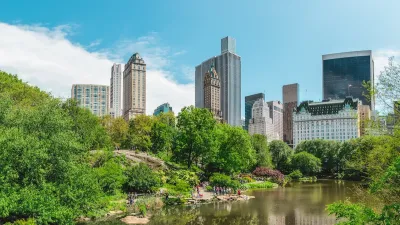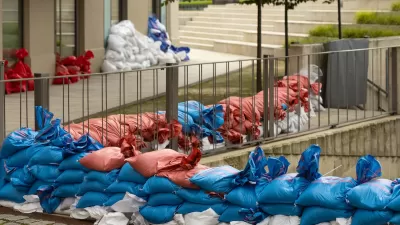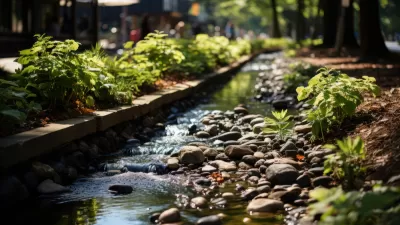Madrid, already famous for deciding to impose stringent limitations on driving, has a plan to blanket the city in green to increase its resilience to the effects of climate change.
"In Madrid, pretty much every unused space will soon be covered in plants," according to an article by Adele Peters.
The details of a wide-ranging and ambitious plan:
The city is spending millions to expand existing parks, and as many roofs and walls will be covered with greenery as possible. Twenty-two vacant lots will be turned into urban gardens. Paved squares will become parks that can suck up rainfall. Near the river that runs through the middle of the city—where a major highway was torn down in 2003—the city is spending over $4.3 million to finish filling in the banks with trees.
Cars will also no longer be welcome on some of the center city's streets, allowing planned space for linear parks as well.
The plan addresses one of the key buzzword surrounding planning and cities in recent years: resilience. Already, Madrid has felt the heat of increasing temperatures and decreasing rainfall. Peters explains in more detail how each of these landscaping projects can improve quality of life as the city faces the new threats brought about by climate change.
FULL STORY: Madrid Is Covering Itself In Plants To Help Fight Rising Temperatures

Americans May Be Stuck — But Why?
Americans are moving a lot less than they once did, and that is a problem. While Yoni Applebaum, in his highly-publicized article Stuck, gets the reasons badly wrong, it's still important to ask: why are we moving so much less than before?

Using Old Oil and Gas Wells for Green Energy Storage
Penn State researchers have found that repurposing abandoned oil and gas wells for geothermal-assisted compressed-air energy storage can boost efficiency, reduce environmental risks, and support clean energy and job transitions.

Placekeeping: Setting a New Precedent for City Planners
How a preservation-based approach to redevelopment and urban design can prevent displacement and honor legacy communities.

San Francisco’s Muni Ridership Grew in 2024
The system saw its highest ridership since before the Covid-19 pandemic, but faces a severe budget shortage in the coming year.

Colorado Lawmakers Move to Protect BRT Funding
In the face of potential federal funding cuts, CDOT leaders reasserted their commitment to planned bus rapid transit projects.

Safe Streets Funding in Jeopardy
The Trump administration is specifically targeting bike infrastructure and other road safety projects in its funding cuts.
Urban Design for Planners 1: Software Tools
This six-course series explores essential urban design concepts using open source software and equips planners with the tools they need to participate fully in the urban design process.
Planning for Universal Design
Learn the tools for implementing Universal Design in planning regulations.
Heyer Gruel & Associates PA
City of Moreno Valley
Institute for Housing and Urban Development Studies (IHS)
City of Grandview
Harvard GSD Executive Education
Salt Lake City
NYU Wagner Graduate School of Public Service
City of Cambridge, Maryland





























